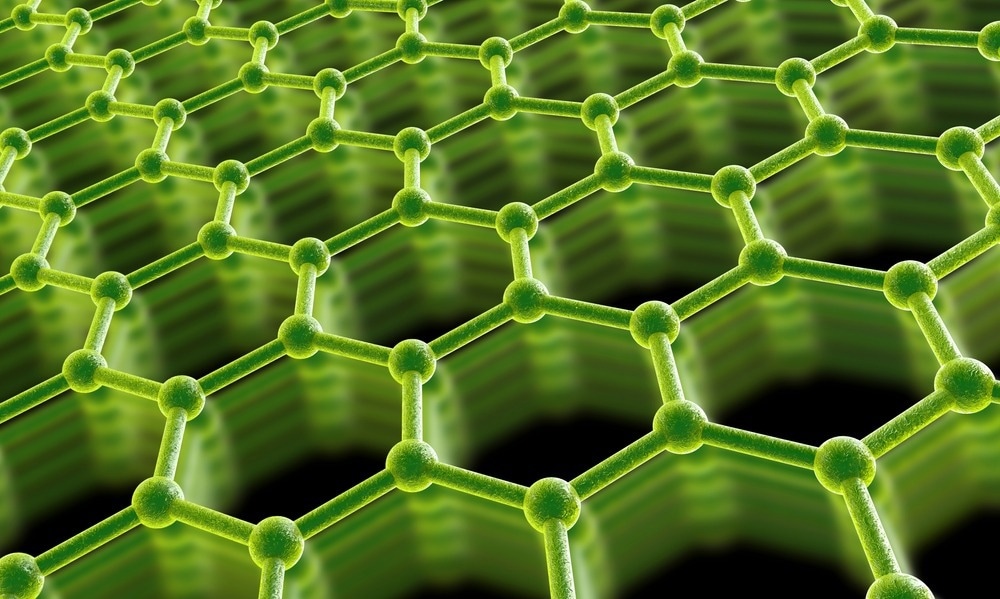Superhydrophobic coatings are water repellent surfaces with several industrial uses, including self-cleaning, chemical resistance, drag minimization, sensing, photovoltaic cells, biomedicine, and antifouling devices.

Study: Fabrication of eco-friendly graphene-based superhydrophobic coating on steel substrate and its corrosion resistance, chemical and mechanical stability. Image Credit: Shutterstock.com
Developing a surface with these properties can be challenging, particularly when ecological and customer safety concerns are taken into account.
A recent study published in the journal Scientific Reports focuses on the potentiostatic electrodeposition of eco-friendly graphene to create superhydrophobic coatings on steel surfaces. Rice straw, an ecologically benign biomass material, was used to create eco-friendly graphene.
What are Superhydrophobic Coatings?
Superhydrophobic surfaces have a contact angle higher than 150° and are exceptionally non-wettable. Various superhydrophobic surfaces with exceptional water repellency may be developed by increasing surface abrasion and decreasing surface energy, two key prerequisites for superhydrophobicity.
Because of their ultralow interface energy, perfluorinated substances, such as fluoro-silanes or fluorocarbon monomers, have historically been employed as low surface energy materials. However, using such long-chained fluorocarbons has been shown to be very hazardous, with significant environmental consequences such as low durability, biomagnification, and bioavailability.
As a result, low-cost, environmentally acceptable technologies and materials (such as eco-friendly graphene) for creating superhydrophobic surfaces are required.
Several techniques for producing superhydrophobic coatings have been reported, including absorption, electrospinning, electrodeposition, layer self-assembly, and plasma etching.
Due to its low-temperature procedure, cleanliness, low cost, convenience, and adjustable microstructures, electrodeposition is an effective technology for producing synthetic superhydrophobic surfaces.
Superhydrophobic Surfaces: Advantages and Limitations
Steel substrates have several uses owing to their strong physical strength and inexpensive cost. At the same time, they have a high proclivity to corrode due to electrochemical processes. Corrosion is often recognized as one of the most critical problems in terms of commercial and safety ramifications.
Steel surfaces may be protected using a variety of approaches, the most significant of which is the manufacture of superhydrophobic coatings to boost corrosion resistance.
However, superhydrophobic surfaces have significant drawbacks such as low structural resilience and physical instability, limiting their practical applicability. Their mechanical roughness tolerance and chemical stability must be improved to employ superhydrophobic surfaces in industry.
Eco-Friendly Graphene for Superhydrophobic Coatings
Graphene is a 2D carbon amorphous polymer with a honeycomb pattern. It is an extraordinary nanomaterial because it is both the lightest and most resilient carbon-based nanostructure. Due to its toughness, singular atomic layer depth, chemical stability, and impermeability to many gases, graphene is an excellent substance for coatings, particularly anti-corrosion coating materials.
The four basic ways for producing graphene are catalytic reduction of graphene oxide, exfoliating graphite, epitaxial growth on silicon carbide, and chemical vapor deposition (CVD). However, the bulk of these methods are time-consuming and entail the use of potentially harmful chemicals and gases.
As these common approaches have time and production value limits, many scientists are now focusing on creating green synthesis methods for eco-friendly graphene fabrication.
The researchers created a superhydrophobic eco-friendly graphene-based coating to improve the corrosion protection of steel surfaces in this study. Stearic acid, an ecologically benign and inexpensive chemical, was employed as a low surface energy substance. Two superhydrophobic coatings were created: nickel-stearic acid (Ni-SA) and nickel-graphene-stearic acid (Ni-G-SA).
A green synthesis process was employed to create eco-friendly graphene from rice straw, a renewable energy source. In an aquatic solution of sodium chloride, the hydrophilicity, chemical and mechanical durability, and corrosion resistance qualities of the produced superhydrophobic coatings were tested.
Important Findings of the Study
The fluid contact angle of the produced superhydrophobic Ni-G-SA coating is 161.4°, whereas the Ni-SA coating is 155.7°. The addition of eco-friendly graphene boosts the abrasion of the produced coating, resulting in enhanced superhydrophobicity.
According to the chemical stability study, the Ni-SA coating preserves superhydrophobicity in the pH region 3-11, whereas the Ni-G-SA coating maintains superhydrophobicity in the pH region 1-13.
The physical abrasion test revealed that the manufactured superhydrophobic Ni-SA coating is superhydrophobic until an abrasive length of 150 mm. In contrast, the Ni-G-SA coating is superhydrophobic until an abrasive length of 300 mm, suggesting that using eco-friendly graphene in the developed superhydrophobic coating increases its mechanical and chemical resilience.
The current work presents an innovative and environmentally favorable synthesis process for producing eco-friendly graphene for superhydrophobic coatings. These discoveries are expected to open the way for further study into the extraordinary features of these ecologically friendly coatings.
Reference
Mohamed, M. E. et al. (2022). Fabrication of eco-friendly graphene-based superhydrophobic coating on steel substrate and its corrosion resistance, chemical, and mechanical stability. Scientific Reports. Available at: https://doi.org/10.1038/s41598-022-14353-0
Disclaimer: The views expressed here are those of the author expressed in their private capacity and do not necessarily represent the views of AZoM.com Limited T/A AZoNetwork the owner and operator of this website. This disclaimer forms part of the Terms and conditions of use of this website.